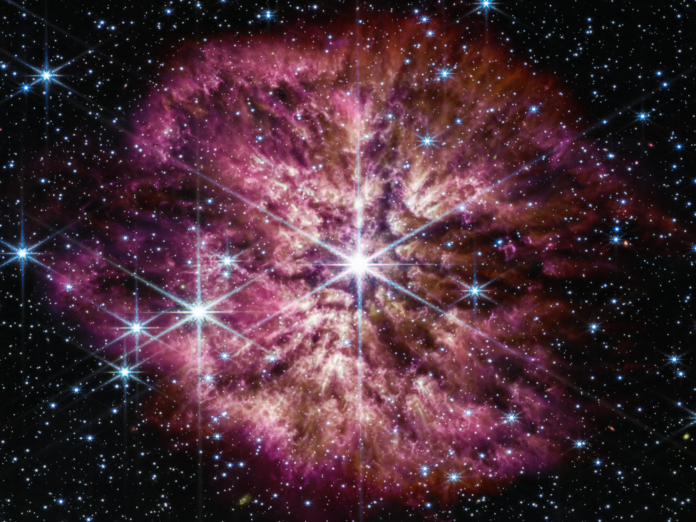The uncommon and ephemeral phase of a star on the verge of dying has been caught by the James Webb satellite telescope. The telescope made the observation among its first after it was launched in late 2021, but the image wasn’t made public until this week.
All the gas and dust that a massive, blazing star 15,000 light years away was hurling into space was visible to Webb’s infrared sight. 5.8 trillion miles make up a light year.
Shimmering in purple like a cherry blossom, the cast-off material once comprised the star’s outer layer.
The Hubble space telescope snapped a shot of the same transitioning star a few decades ago, but it appeared more like a fireball without the delicate details. Only certain stars undergo such a change, which is typically the final phase before a star explodes and goes supernova, according to experts.
During the Wolf-Rayet stage, stars shed their outer layers, which encompass them in a ring of glowing cosmic dust and gas. So far in its Wolf-Rayet journey, WR 124 has shed ten suns’ worth of material. The image “preserves forever a brief, turbulent time of transformation,” per NASA.
Wolf-Rayet stars, which are very hot and bright, get their name from French astronomers Charles Wolf and Georges Rayet, who in 1867 first identified this unique stage in the star’s life cycle.
Astronomers have only recorded a few hundred Wolf-Rayet stars, the majority of which are located in the Milky Way galaxy’s spiralling arms.
Never before have we witnessed it in that way. It’s quite thrilling, added Macarena Garcia Marin, a scientist at the European Space Agency who is involved in the research.
This star in the constellation Sagitta, officially known as WR 124, is 30 times as big as our sun and has already shed enough material to account for 10 suns, according to Nasa.


